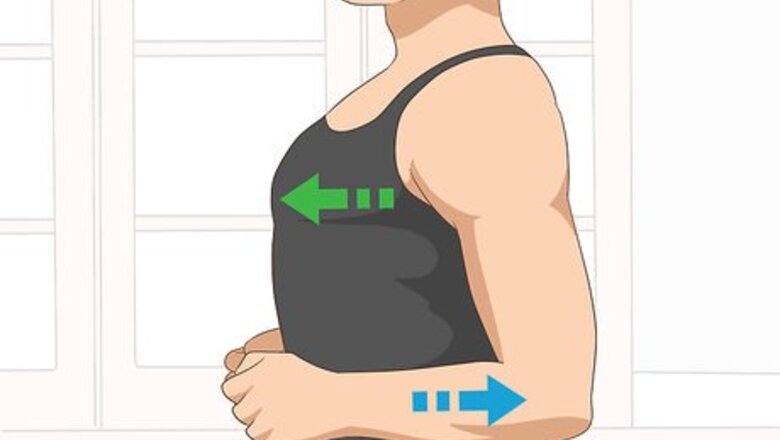
views
Stretching to Crack Your Sternum
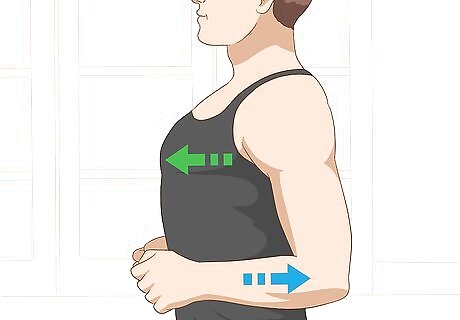
Push your elbows back for a simple stretch that might crack your sternum. Start by standing with your feet shoulder-width apart. Bend your arms at the elbows and push your chest forward so it begins to stretch your rib cage area. As you move your chest forward, move your elbows and shoulders back at the same time. This movement will stretch out your chest even more, which may result in your sternum cracking. Imagine trying to touch your elbows behind your back. That's the movement you should be aiming for!
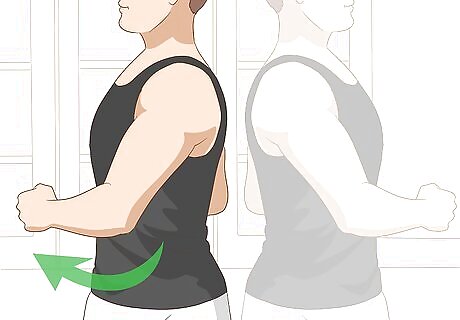
Twist your torso side to side if your sternum hasn’t cracked. Bring your arms up so they're almost even with your shoulders, then bend your elbows. Twist your torso to the left as far as you can without straining, keeping your feet, knees, and hips in place. Then, twist all the way to the right. Repeat this process about 4 or 5 times, or until your sternum pops. This movement will help open up your chest, which can help your sternum pop. However, even if you don’t hear a pop, you’ll likely get some pain relief just from stretching. You can do this exercise while you’re standing, or you can try it sitting down if you prefer.
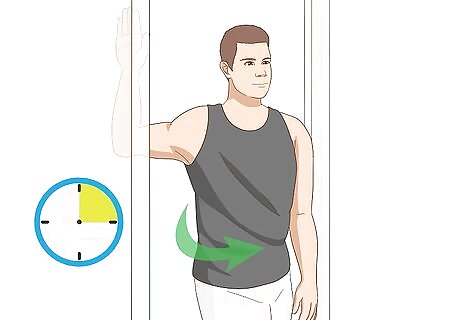
Try a doorway stretch for an easy variation on a twist. Hold one of your elbows at a 90° angle from your body, with your forearm pressed against a doorframe. Stagger your feet, then rotate your torso away from the doorframe, pressing in with your forearm to increase the resistance. Hold the stretch for 10-15 seconds, or until you hear a pop in your chest. Stop doing this stretch if you feel any tingling in your chest, shoulders, or back.
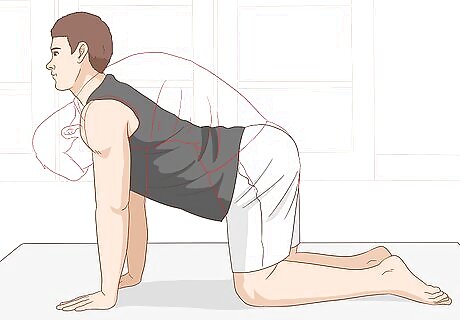
Practice the cat-cow pose to crack your sternum with yoga. Kneel on all fours, with your palms directly under your shoulders and your knees lined up with your hips. Arch your back upward and look at the floor near your feet so your back hunches, similar to the way a hissing cat looks. Stretch in this position for several seconds, then arch your back down as you look up to the ceiling, so your back has a cow-like sway to it. Hold this stretch for several seconds, then relax. Repeat the exercise about 3 times. Your sternum may crack when you move into the cow position.

Try a bridge stretch to pop your sternum while you’re lying down. Lie on your back on an exercise mat or carpet, then bend your knees so your feet are flat on the floor. Push your hips up into the air, squeezing your ab muscles and your glutes as you lift. Hold the pose for a few seconds, then relax and lower yourself to the ground. Since your shoulders stay on the ground, this exercise can lengthen and stretch your sternum, which may cause it to crack.

Don’t try to crack your sternum more than once a day. While stretching daily is a good idea, limit cracking your sternum to one time a day at the most. Just like with any other joint, cracking it too often can lead to hypermobility, which means the joint will extend past where it should naturally. This can lead to ongoing pain issues, and it can also make you more vulnerable to injury in that area. Warning: Avoid exercises that cause your chest to pop each time you do them, like dips. Over time, these movements can potentially affect your cartilage and lead to pain.
Breathing Deeply to Crack Your Sternum
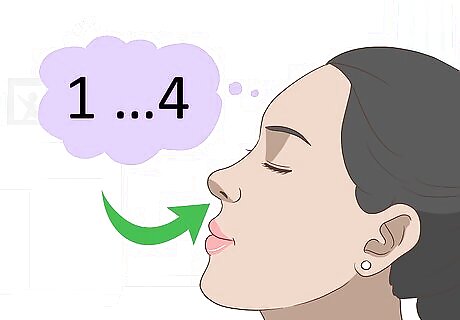
Breathe in deeply through your nose. Sometimes, a deep breath can expand your torso enough to crack your sternum. Start sitting or lying down, then inhale deeply through your nose. As you breathe in, slowly and steadily pull in as much air as you can. Try counting to 4 or even 8 in your head as you inhale. If you can't breathe in through your nose, it’s fine to breathe through your mouth instead.
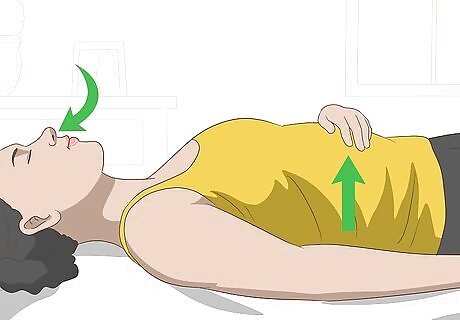
Place your hand on your stomach to feel the use of your diaphragm. When you breathe through your diaphragm, your belly will move, rather than your chest. By resting your hand on your stomach, you’ll be able to visually see whether you’re breathing deeply enough. This expanding movement is what may pop your sternum for you.

Breathe out through your mouth. Exhale the air you drew in. Take at least twice as long to exhale your breath as you did to inhale. Count in your head if you need to.
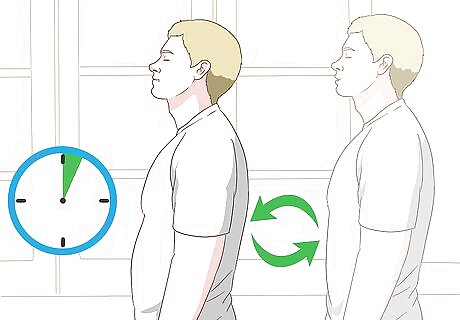
Repeat the process for a few minutes. Deep breathing is a great way to relax, so even if you don't pop your sternum, it still has benefits. Try breathing in and out this way for 1-2 minutes, until you feel yourself relaxing, or until your sternum cracks. As you breathe, focus on relaxing your neck and shoulders. Try to breathe out the tension you're holding there.
Seeing a Doctor
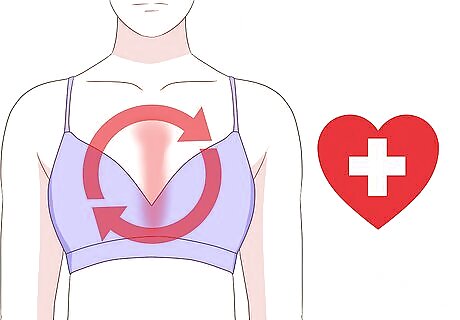
Consider seeing a doctor or chiropractor for ongoing muscle pain. If you’re experiencing long-term swelling, tenderness, or discomfort, it’s a good idea to go in for a medical evaluation. Chances are good that it’s something minor, but it's best to be safe. Your doctor may be able to help you determine whether your posture, sleeping position, or exercise habits might be contributing to your discomfort.
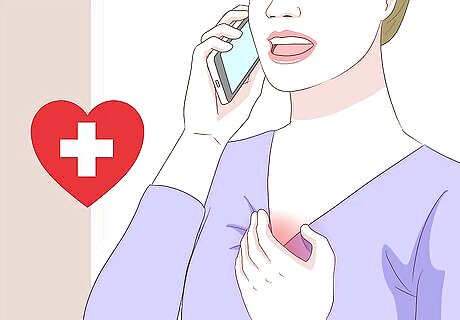
Visit a doctor right away if you have tightness in the center of your chest. Sometimes, cardiovascular problems can seem like muscle pain. If you’re feeling pressure, fullness, or tightness in your chest, make an appointment with your doctor as soon as possible, or go in for emergency medical care if the pain is severe or is accompanied by shortness of breath. Other signs of cardiovascular issues that you need to be aware of include a burning or crushing feeling in your chest.
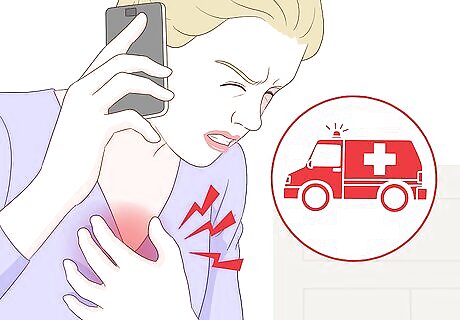
Call for emergency medical help if the pop is accompanied by pain. If you feel intense pain, numbness, or tingling after you hear a pop, it could be a sign of an injury. You may also experience some localized swelling in your chest area. If this occurs, get emergency medical care as quickly as possible. If you don’t seek medical help, you could make the injury worse.















Comments
0 comment